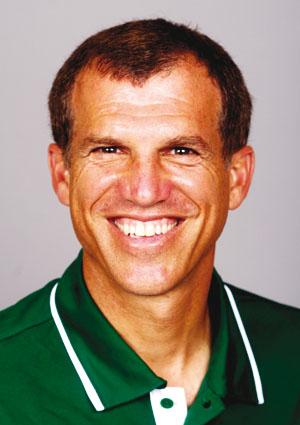Will NCAA Find Success In MLS Stadiums?

They didn’t sell all of the 13,000 or so seats at Region Park in Hoover, for the 2012 NCAA Division I College Cup championship game, but the crowd of 9,242 was the second largest since 2004 when 13,601 turned out at The Home Depot Center in Carson, Calif.
When the announcement was made in 2011 that Hoover would host the men’s Division I championships for two years, it raised some eyebrows.
Afterall, the University of Alabama Birmingham Blazers were the only Division I men’s soccer program in the entire state of Alabama.
UAB head coach Mike Getman was a member of the Division I Coaches Committee, and he believed it would work in Alabama. The prospects of good weather in December, and a promotional organization to attract spectators, was the underpinning of the successful bid to host the event.
The two years in Hoover, a community outside of Birmingham, drew over 18,000 combined for both championship games.
At the time the bids were extended, the local organizers were thinking about providing the NCAA with a permanent venue for the championships, and that included the women’s championships all on the same weekend.
The NCAA recently announced venues for the next four years. Neve[show_disconnected][show_to accesslevel=’Subscriber’]r before had the NCAA announced that far out. Usually, they came in blocks of two years.
And Regions Park was not on the list. Not because a bid from Alabama was turned down. None had been submitted.
“Putting on the College Cup is a massive undertaking,” said Gettman, who is no longer on the NCAA Soccer Coaches Committee, but continues to be a believer that the Division I College Cup is collegiate soccer’s biggest event.
“After hosting for two years, UAB and Birmingham made the decision not to bid for future years,” said Getman. “We may be interested in the future, but for now we will not be an option.”
Next year the Men’s College Cup weekend will be at WakeMed Soccer Park in Cary, a venue that has hosted numerous men’s and women’s Division I finals. After that, for three consecutive years, the men’s final will be played in MLS stadiums beginning in Kansas City in 2015, followed by Houston, TX and back at PPL Park in Philadelphia in 2017.
This year in a beautiful MLS stadium, the championship game drew only an announced crowd of 3,348 to watch Notre Dame beat Maryland 2-1. The semifinal crow was 4,172. The weather was cold!
“I was really disappointed to see the low attendance figures from Philly,” said Getman. “The College Cup is our showcase for Division I soccer. Administrators see the attendance figures and compare us to other sports.
“It appears there is a lack of support for men’s soccer. We know that this is not really true. Attendance is growing at games all over the country.
“When you put the event in a cold weather venue, you reduce the likelihood people will attend. Most will just stay at home and watch on television when faced with freezing temperatures.”
The turnout in California in 2004 has been the largest since 1999 in Charlotte in the home stadium of the NFL Carolina Panthers. That year those 15,430 fans were lost in the 70,000-plus stadium.
For eight consecutive years, starting in 1993 at Davidson College, the NCAA men’s final enjoyed crowds in excess of 10,500. Four years in Richmond pulled in a combined championship game total of over 80,000. The largest crowd there was 21,319 in 1995. That is the all-time record.
Charlotte hosted two years after Richmond.
The NCAA has held its championship in MLS stadiums in the past. They have been to Columbus, Ohio, and Frisco, Tex., but never reached 8,000 at any of those.
That run of eight years in Davidson, Richmond and Charlotte were in years where Major League Soccer was getting started and was not attracting big crowds. The NCAA finals were locally embraced.
The NCAA championship weekend has some internal problems. Attendance is often dictated by who qualifies for the final four slots in the semifinals. Quarterfinal winners have less than a week to prepare, as do the local organizers. Local teams coming or teams from the four corners of the country? Will their fans travel with the team? Will they buy tickets?
If not, can the local organizers sell the event locally in the weeks and months leading up to the final? Will the NCAA provide the local organizing committee with early advertising revenue to promote the games well before the weeks just prior to the event?
Three of the next four men’s finals will be played in Major League Soccer stadiums, and the women’s D-I championship will have a two-year run in the proposed MLS stadium in Orlando.
Who promotes the event? If it becomes the responsibility of the professional club. Will that group put in the effort at a time when they are up and running marketing their own team for the coming season? We’ll see.
Getman still feels that Birmingham and Regions Park may be an option in the future. Perhaps after four years, the weather will dictate where the NCAA will consider placing the men’s final in 2018.
[/show_to][hide_from accesslevel=’Subscriber’]
Your subscription has expired please
Subscribe to Southern Soccer Scene to view full article and get all the news in your mailbox![/hide_from]
